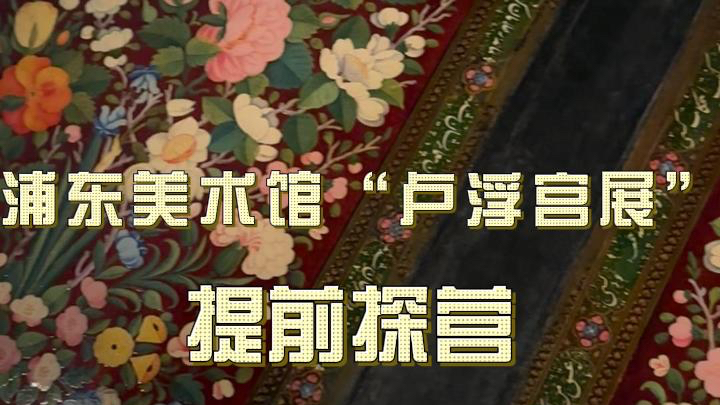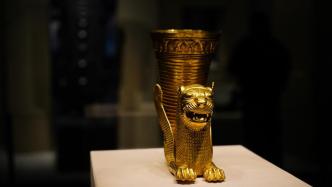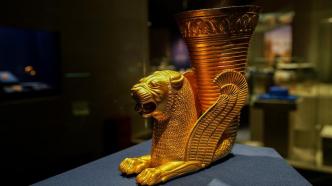
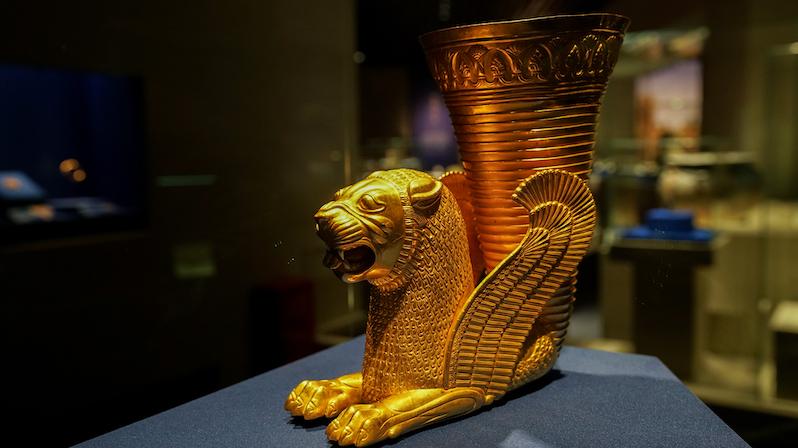
Iran is located in West Asia and is an ancient country with a long history. Its prehistoric culture can be traced back hundreds of thousands of years. The Achaemenid Dynasty, Parthian Dynasty, Sassanid Dynasty and other dynasties established successively have a wide influence in the world. In Chinese historical records, it was called "Anxi" in the Western Han Dynasty and "Persia" after the Southern and Northern Dynasties. Iran and China are the two major sources of civilization on the Silk Road, and their relationship has a long history. Through the network of the Silk Road, ancient civilizations exchanged goods, exchanged ideas, and blended cultures, which greatly promoted the development of human civilization.
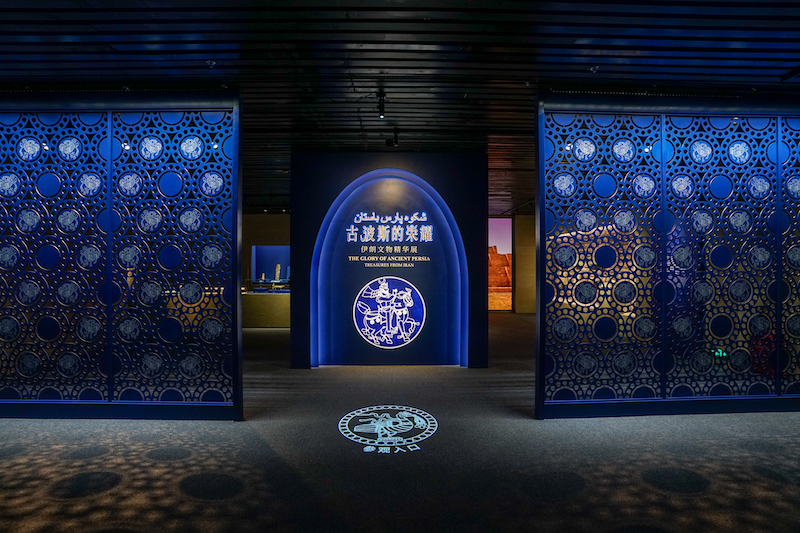
exhibition site
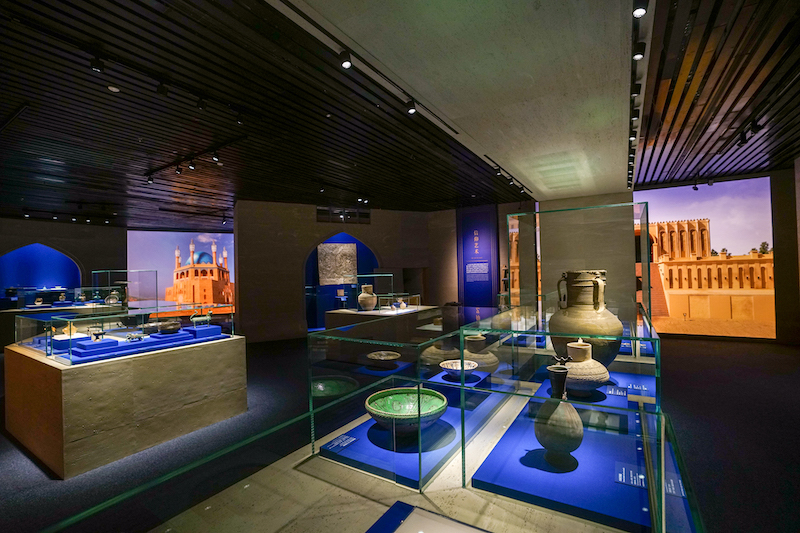
exhibition site
The director of the National Museum of Iran, Jabral Nokand, said at the scene that the National Museum of Iran had participated in the "Blue and White Porcelain Exhibition of the Yuan Dynasty" held by the Shanghai Museum in 2012. The Iranian loaned cultural relics this time are larger in scale and richer in content. He hoped that this exhibition would provide the Chinese people who love culture with an opportunity to experience and appreciate the beauty of Iranian culture and civilization up close.
"This exhibition opens a new chapter for the Shanghai Museum's People's Square building to be positioned as the 'Museum of World Civilizations'. Starting with this exhibition, the Shanghai Museum will launch more thematic exhibitions related to the world's ancient civilizations in the future, making the Shanghai Museum a display platform for the world's civilization garden," said Chu Xiaobo, director of the Shanghai Museum.

exhibition site
"Through this exhibition, on the one hand, we want to explain to the audience the long history and splendid civilization of ancient Iran; on the other hand, we also want to show that China and Iran, as the east and west ends of the ancient Silk Road, played a key role in the ancient Silk Road. Through the exhibition, the audience can better and more intuitively understand the characteristics of the ancient Silk Road in civilization and cultural exchanges." Wang Yue, a research curator at the Shanghai Museum, introduced.
Elamites on the Plateau
Since 3000 BC, people living on the Iranian Plateau have started the process of civilization. They built magnificent buildings, produced exquisite gold and silver wares, glazed pottery and glassware, and constructed a colorful material world. At the same time, they built temples and shaped the spiritual world. With the development of the times, ancient Iran gradually grew into one of the main creators of the material and spiritual world in West Asia. The exhibition explains the long history and splendid civilization of ancient Iran through three sections: "Dawn of the Plateau", "Glorious Era" and "Art of Faith".
The "Dawn of the Plateau" section focuses on the Elamites on the plateau. The exhibition begins with the Elamite Kingdom, which was born in the southwest of the Iranian Plateau around 2800 BC.

exhibition site
In the records of the Assyrian Kingdom in the Mesopotamian region at that time, the cities of Elam were prosperous and wealthy. The Elamites used cuneiform characters, worshipped various gods, and built large temple and palace complexes. They liked to use geometric and animal patterns to decorate the surface of pottery. Abstract lines and deformed and exaggerated human or animal patterns were a reflection of the Elamites' belief consciousness. The Elamites were also keen on the shape of utensils with long spouts. Elam also interacted and integrated with the horse-riding peoples in the north and the Mesopotamian civilization in the west. On various utensils such as bronze and gold utensils, highly developed craftsmanship and artistic spirit were expressed. The various artistic images created by the Elamites on the plateau had a profound impact on the plastic arts of the Iranian plateau in later generations.

Exhibition site: Zebu Pottery from the Iron Age
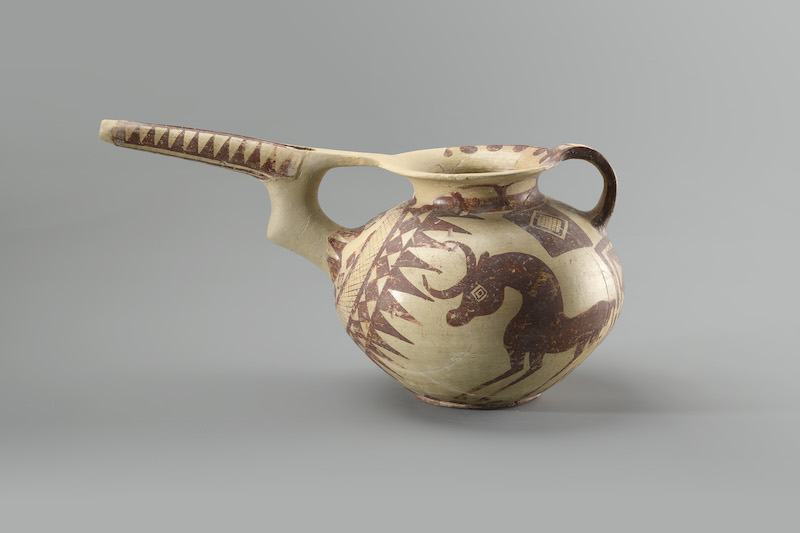
Painted pottery pot with pipe spout Iron Age
For example, among the daily pottery and other objects of the early Iranian plateau on display, painted geometric patterns and animal patterns are the most popular, especially animal patterns such as cattle, horses, and sheep, showing the historical scene of the horse-riding people entering the plateau. From the pipe-spouted painted pottery pots, underglaze painted pottery bottles, animal-shaped pottery, to animal-patterned gold cups on display, they all reflect the subtle observation and exquisite depiction of animals by people at that time.

Gold cup with animal pattern Iron Age

Underglaze painted pottery vase (partial) 8th-7th century BC
"The ancient Iranians were very precise in their observations of animal forms and their expressions of dynamics. Every detail on the animals was expressed particularly clearly. They were keen on depicting these animal patterns on objects. On the one hand, this was due to their interaction and integration with the horse-riding peoples, and these animals themselves were closely related to their lives. It may also indicate that in the spiritual world of the ancient Iranians, animals may have some kind of referential meaning and are a kind of symbol in their spiritual world." Wang Yue said.
Brilliant Art from the Achaemenids to the Sassanids
From the Achaemenid Empire in the 6th century BC, through Parthia, to the Sassanid Empire, this lasting more than a thousand years was the most exciting period in the history of ancient Iran, and together they built a glorious era of art on the Iranian plateau. Wang Yue said, "The second section, 'Glorious Era', is the core of this exhibition, echoing the name of the exhibition, 'The Glory of Ancient Persia', and is intended to present the brilliant civilization of ancient Persia."

exhibition site
The Achaemenid dynasty laid the cultural foundation of ancient Persia. After its fall by Alexander, it experienced Hellenistic rule and influence, so the Parthian dynasty had the characteristics of both Persian and Greek cultures. Iran during the Sassanid period, from culture to art, was full of regional characteristics and local vitality, and started the process of comprehensive Iranization.

Cuneiform clay tablet unearthed from the ruins of Persepolis
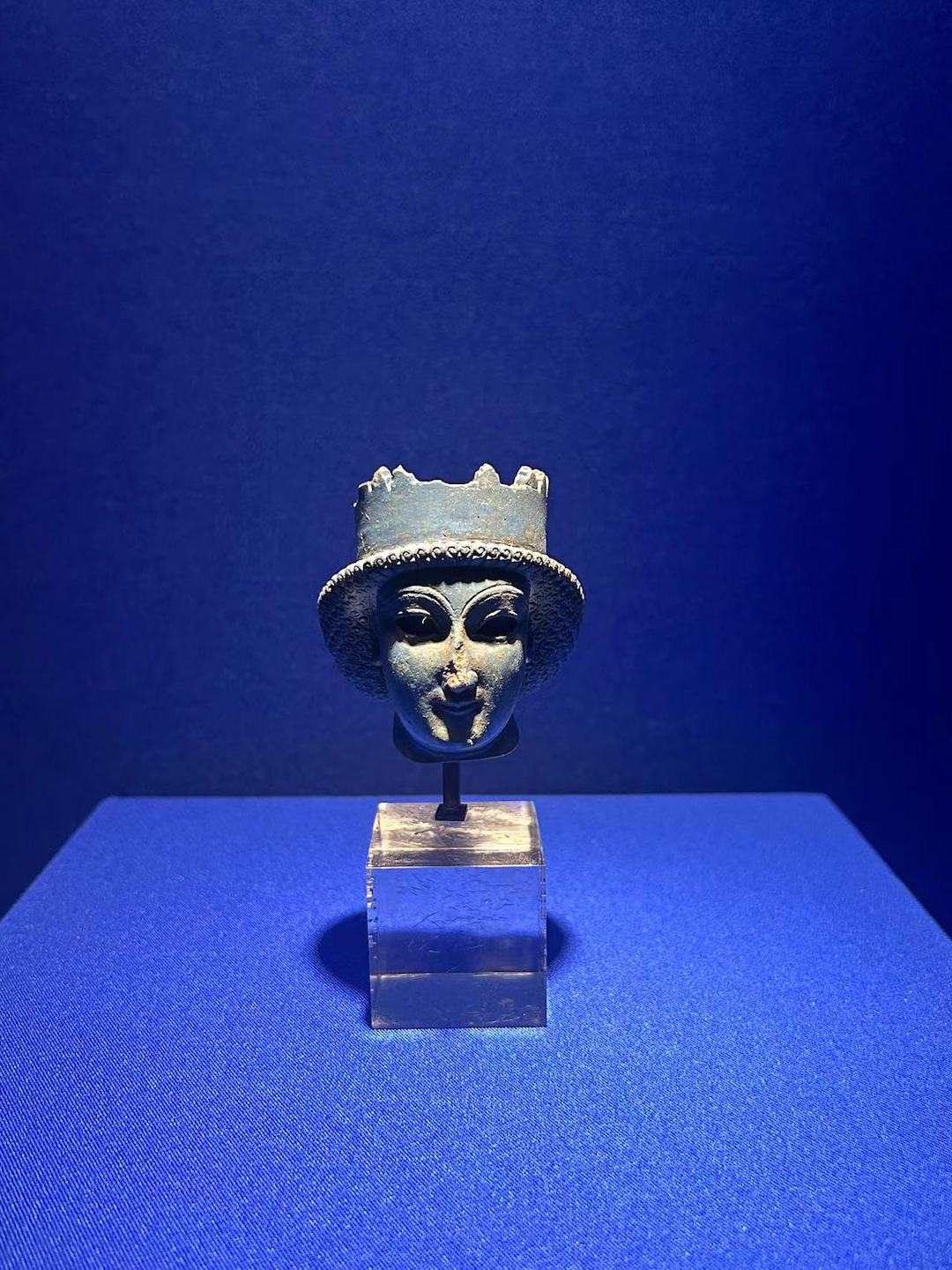
Egyptian blue head unearthed from the ruins of Persepolis
This section displays cultural relics unearthed from many famous ancient sites in Iran, such as cuneiform clay tablets, double-ox capital stone columns (replicas), half-length lion statues, Egyptian blue heads and other cultural relics unearthed from the world cultural heritage site of Persepolis.

exhibition site
Persepolis is the site of a palace city during the Achaemenid Dynasty of the ancient Persian Empire in Iran. It has a world-famous palace complex and exquisite statues, which were later burned down during Alexander's eastern expedition. The ruins of the ancient city of Persepolis provide a lot of precious information about ancient Persian civilization and have important archaeological value.

Winged Lion Gold Laitong Achaemenid Empire
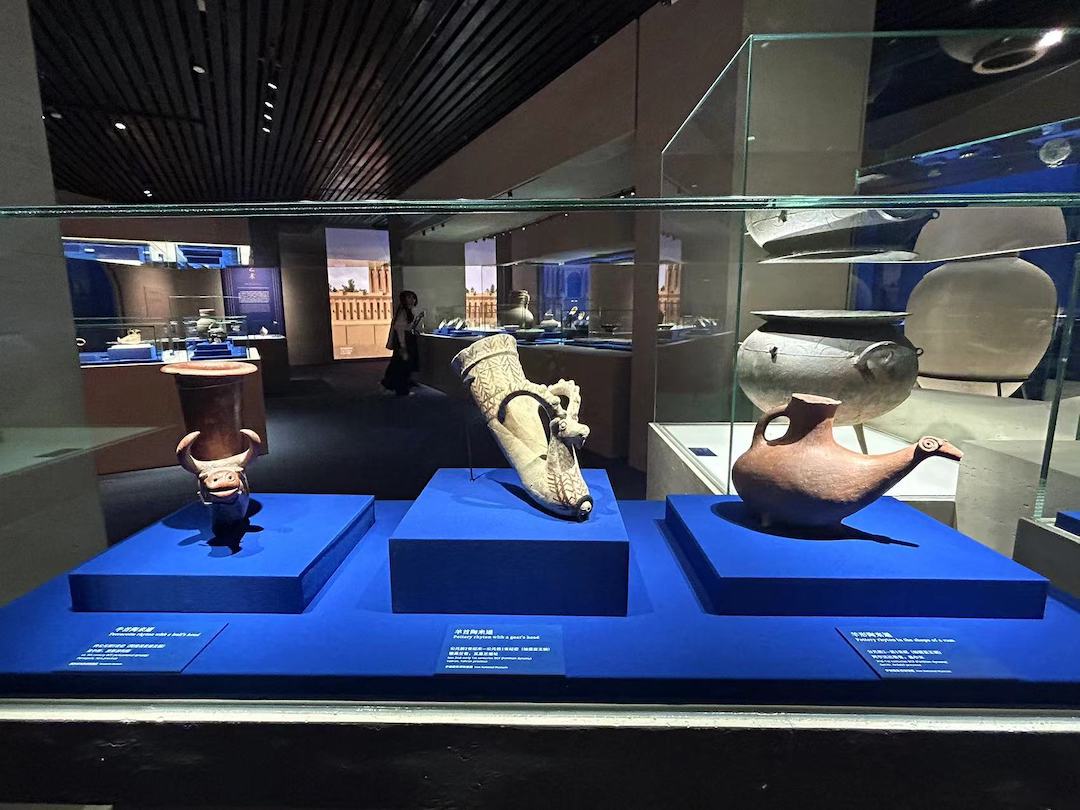
Tao Laitong in various animal shapes at the exhibition
The golden "Winged Lion Golden Laitong" from Hamadan Province is exhibited in a separate display case. Conical drinking vessels, Laitong, have appeared since 2000 BC and gradually became popular in a wide area from the Aegean Sea to West Asia. Laitong may have originated from the earliest human habit of drinking from animal horns, and then gradually developed into various materials and shapes. This exhibition displays a large number of Laitong, such as animal pottery Laitong, ox-headed pottery Laitong, sheep-headed pottery Laitong... But the golden Laitong is unique. "This Laitong combines a winged lion body with a nearly conical vertical cup body, with a circle of lotus patterns on the top of the cup body and parallel groove lines below. The lion is in an open mouth with a tongue sticking out, with a mane on the head, neck and chest, and the front paws naturally on the ground. The ends of the wings are decorated with three rows of feather patterns, and the ends are bent forward. Similar images can be seen in glazed tiles in Susa and reliefs in Persepolis."
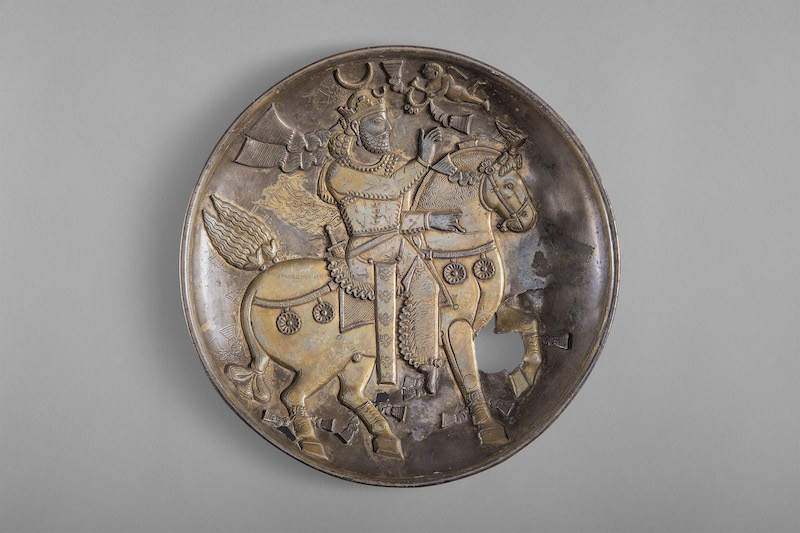
Gilded silver plate with the king on horseback, late Sassanian period
The "Gilded Silver Plate of King Riding Horse" from the late Sassanid Dynasty on display is a typical artifact of Sassanid art style. Unlike the Achaemenid or Parthian cultures with a strong Mediterranean style, Iran during the Sassanid period started a comprehensive Iranianization process from culture to art. "The Sassanid king on the silver plate wears a crescent crown, a ribbon symbolizing the royal family fluttering behind his head, a gorgeously decorated dress, and a sword symbolizing military power..." "The hunting scene on the Sassanid silver plate shows that the king is strong and powerful, and the action of taking over the symbol of power symbolizes the legitimacy of the kingship." Wang Yue said.
Cultural relics prove that China and Iran have a long history of interaction
"This ancient interaction inherited by China and Iran began with the opening of the Silk Road more than 2,000 years ago. Iran, at the western end of the ancient Silk Road, like ancient China, was an important driving force for promoting economic and cultural exchanges along the Silk Road," said Chu Xiaobo.
According to Wang Yue, many unearthed archaeological objects show that there has been material and cultural exchanges between the two ancient civilizations since 1000 BC. After the 2nd century BC, Zhang Qian, as an envoy to the West, actively worked in the Central Asian Amu Darya region, which was deeply influenced by ancient Iranian culture, which gave the Central Plains dynasty a new understanding of the Western world. For a long period of history thereafter, the Silk Road traffic flourished, and material trade was the main driving force.

A brocade with linked beads and bird patterns, unearthed from Tomb No. 70 in Astana, Turpan, Tang Dynasty, in 1966

Persian inscribed silver bowl from the Jin Dynasty to the Tang Dynasty, unearthed in 1989 in Laocheng Village, Qigexing Town, Yanqi County, Bayingolin Mongol Autonomous Prefecture, Xinjiang
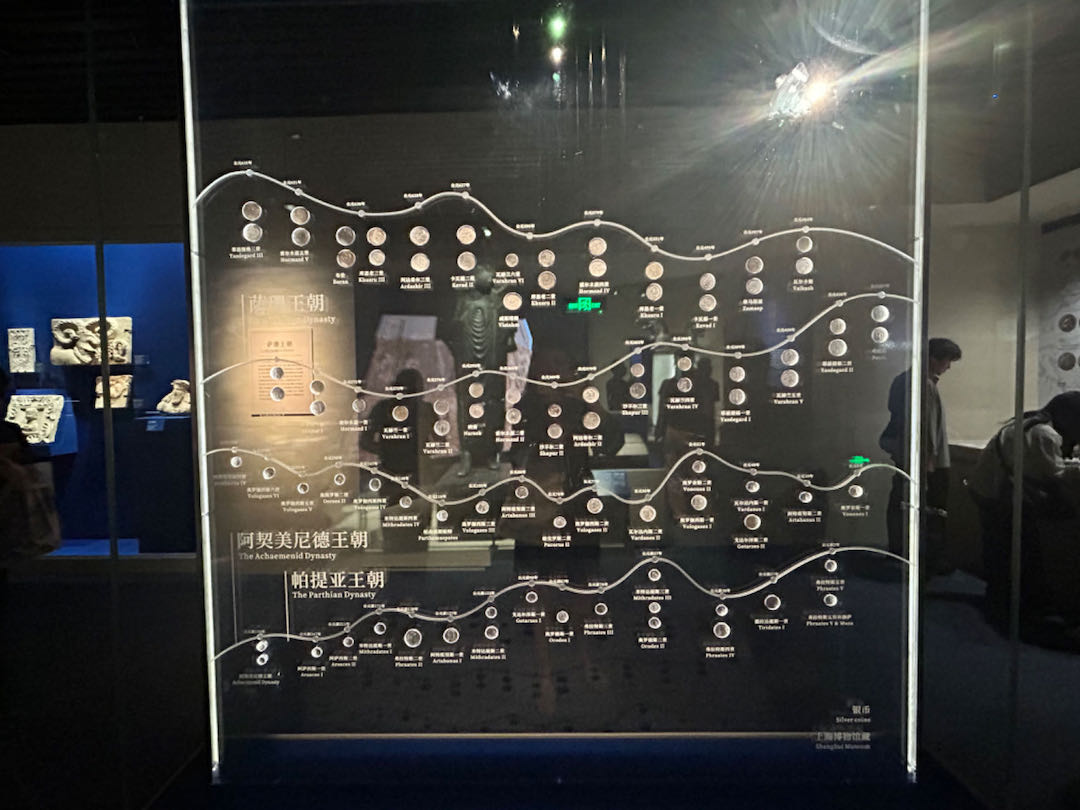
Silver Coin Shanghai Museum Collection
The exhibition displays the Silk Road silver coins spanning a thousand years from the Achaemenid Dynasty to the Sassanid Dynasty from the Shanghai Museum's collection, the Sassanid-style brocade unearthed in Turpan, Xinjiang, the Persian-inscribed silver bowls unearthed in Xinjiang, and more than 1,000 exquisite Chinese artifacts collected in the Ardabil Temple, all of which are witnesses to the trade and cultural exchanges between ancient China and Iran.

Chinese artifacts in Ardabil Temple

Underglaze blue and white porcelain plate
"The Persian inscribed silver bowls unearthed in Xinjiang and the Tang Dynasty brocade with linked beads have obvious Iranian styles. If we regard the brocades of the Jin and Tang dynasties as the import of trade goods from the west to the east, then the porcelains from the Yuan Dynasty in the 14th century found in Iran are the export from the east to the west, indicating that ancient Iran and China maintained frequent material exchanges for nearly a thousand years."
The exhibition will run until October 7th.
